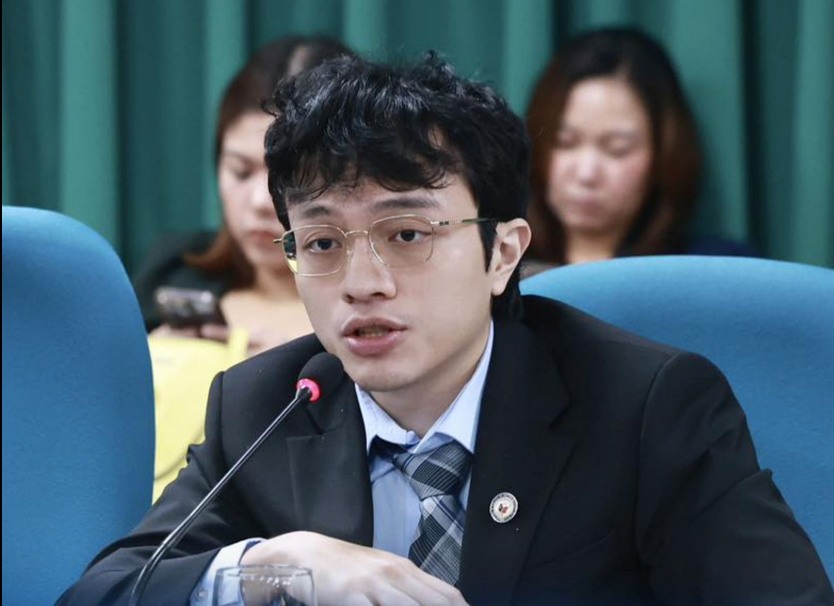President Ferdinand “Bongbong” Marcos Jr.’s claim during his State of the Nation Address that the Philippines enjoys internet connectivity in every corner reveals a shocking disconnect from reality—much like his boast of 5,500 completed flood control projects. Just as Metro Manila nearly submerged under a recent typhoon, his statements on nationwide internet access and flood prevention are exposed as empty rhetoric, out of touch with the true struggles faced by Filipinos. The ground reality tells a far grimmer story, with countless communities left in the digital dark. This stark contrast reveals yet again the administration’s complete disregard for the struggles of everyday Filipinos, highlighting a government more concerned with grandstanding than with real, sustainable solutions.
The “Free WiFi for All” initiative, a so-called flagship project of the Department of Information and Communications Technology (DICT), is another glaring example of the administration’s incompetence. While it might sound commendable in theory, it is a disastrous failure in practice. This program, much like the other empty promises of this administration, was doomed from the start due to poor planning, lack of foresight, and an utter disregard for long-term sustainability. Let’s break down why this program epitomizes the government’s inability to implement meaningful technological solutions—and what alternatives could actually work.
- Broken Promises and Key Issues:
- The Mirage of Connectivity
Marcos Jr.’s promise of “Free WiFi for All” is a cruel mirage. Yes, there are token spots where you might catch a faint WiFi signal, but for most Filipinos, the reality is a struggle to find any reliable connection. This program is a flimsy band-aid over a gaping wound, highlighting the administration’s preference for flashy announcements over real, impactful action.
- Built to Fail
From any serious project management perspective, the DICT’s free WiFi initiative was never going to last. Maintaining public internet access is a costly endeavor—an expense this administration is clearly unprepared to sustain. Given the government’s abysmal track record of managing public funds, it’s no surprise that this project, like many others, is on a fast track to failure.
- Zero Accountability
The sheer lack of accountability in the DICT’s program is appalling. Despite pouring billions into this initiative, there’s little transparency about how these funds are being spent. This absence of oversight not only invites corruption but also ensures that yet another government project is destined to collapse under the weight of its own mismanagement.
- At What Price?
While “free WiFi” sounds like a good deal, the reality is that it diverts critical resources from other, more essential infrastructure projects. And the WiFi that is available? It’s slow, unreliable, and often more frustrating than useful. Once again, the government has over-promised and under-delivered, leaving Filipinos to pick up the pieces.
- Misguided Efforts
This administration’s approach to closing the digital divide is tragically misguided. Instead of focusing on improving the country’s overall internet infrastructure, they’re busy handing out broken promises. The current DICT is focused more on rolling out public events that have absolutely no value to the public as opposed to rolling out real IT projects that will benefit the nation. Reliable, fast connections are what Filipinos need—not the illusion of connectivity offered by sporadic, substandard WiFi.
- Unqualified Leaders
The ongoing struggles to improve internet connectivity in the Philippines can be largely attributed to the inept leadership within the Department of Information and Communications Technology (DICT). Despite the ambitious plans and significant funding allocated for digital infrastructure projects, these initiatives are unlikely to achieve their intended impact due to the lack of qualified and knowledgeable leaders at the helm. The DICT’s failure to prioritize technology expertise in its leadership has led to poor decision-making, mismanagement, and an overall inability to effectively implement the changes necessary for better internet services across the country.
- Realistic Solutions and Plausible Considerations:
- PISO Net: A Real Solution
Unlike the government’s failed initiatives, PISO Net stations present a viable alternative. These pay-per-use internet kiosks offer affordable, sustainable access to the internet without the need for government subsidies. This model, which has already proven successful, could be expanded to provide consistent internet access where the government has failed.
- Minimal Fees, Maximum Impact
Another practical solution is to introduce minimal fees for accessing government WiFi. This would generate the revenue needed to maintain and improve the service, ensuring that users get a reliable connection worth paying for. Unlike the current system, which bleeds public funds dry, a fee-based model could provide a sustainable path forward.
- Private Sector Collaboration
Partnering with the private sector is essential if the government is serious about providing sustainable internet access. Telecom companies have the infrastructure and expertise that this administration sorely lacks. By leveraging these resources, the government could drastically reduce costs and improve service quality—if only they were willing to admit they need help.
- Learning from the Private Sector
The government could learn a lot from the private sector’s approach to technology. Unlike the bloated, inefficient government machinery, private companies operate with a focus on efficiency and results. Adopting similar practices could prevent future government projects from becoming the expensive, ineffective boondoggles they are today.
- The Necessity of Regular Evaluation
Continuous evaluation is crucial for any project’s success—a fact lost on this administration. The DICT’s free WiFi program needs regular performance assessments to identify problems and make necessary adjustments. Without this, the program is destined to remain just another broken promise.
- Focus on Quality
Instead of spreading resources across countless ineffective WiFi spots, the government should focus on quality over quantity. Fewer, better-quality connections would provide users with a positive experience, rather than the frustration of a half-baked, unreliable service.
The recent approval of the Philippine Digital Infrastructure Project last June 25, and the adjustments to various flagship initiatives are commendable on paper, the reality is that no grand master plan will succeed without competent leadership. The Department of Information and Communications Technology (DICT), tasked with driving these critical digital transformations, suffers from a glaring lack of real technology experts in key positions. Without knowledgeable and qualified officials, these ambitious projects risk falling into the same pit of inefficiency and failure that has plagued many previous initiatives.
So until this administration stops fooling itself and starts listening to the people, its efforts will continue to fall flat. Especially the DICT’s “Free WiFi for All” program is a prime example of this administration’s hollow rhetoric. To truly bridge the digital divide, we need a government that doesn’t just make empty promises but takes real, effective action. Appointing qualified technical leaders, sustainable funding models, private sector partnerships, and focusing on quality over quantity are the only ways forward. If Marcos Jr. can’t deliver on these, his grand vision of a connected Philippines will be as unbelievable as his flood control program that got hit by a ship.
————————
Rafael “Raffy” Gutierrez is a veteran Technology Trainer, boasting over 25 years of expertise in networking, administration, systems design, and diverse computer technologies.




